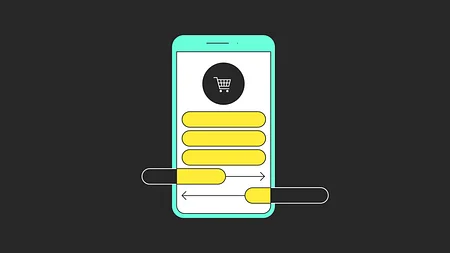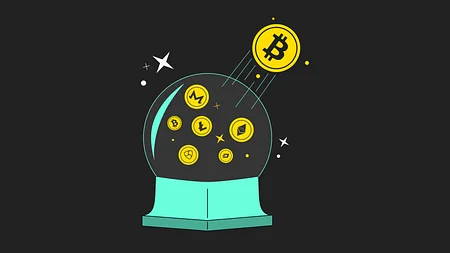Can circular economies do what ESG couldn’t?

This is the second article in a three-part series on how fintech for good (FFG) is helping people and the planet. The first touched on consumer behaviour. If you missed it, check it out here.
This article focuses on fintechs working in the direct climate action section of FFG. We’ll be going deep to understand why ESG was destined to fail and how fintechs embodying a circular economy approach have a much more positive business model.
Direct climate action
Fintechs can have a massive positive impact on the environment. The demand for tangible action is real and, despite still being in the early stages of working in the space, fintechs are perfectly placed to help consumers by shifting where money is invested.
Direct climate action is made up of eight subsections:
Carbon markets
ESG
Circular economies
Impact investing
Green banks
Green blockchains
Green coins
Green pensions
Where it’s gone wrong for ESG
People are quick to label things as a saving grace (just look at Big Data and AI). But ultimately, these grand ideas fall short due to people's inflated expectations and misunderstanding of what they really are and how they work. The same thing has happened to ESG.
ESG has had a lot of bad press recently, but that wasn't always the way. It originated in the 1960s as socially responsible investing (SRI), when investors started to exclude stocks or entire industries from their portfolios, based on business activities like tobacco or involvement in the South African apartheid regime.
So what went wrong? Well, a lot of the backlash and accusations of greenwashing come from four core issues:
The lack of a uniform methodology - ESG funds are based on unregulated ratings. These ratings are, in turn, built on comparative rankings of industry peers and not on any type of universal standards. This is why fossil fuel companies can have better ESG ratings than makers of electric vehicles - Tesla has a worse rating than Shell, for example. This makes it impossible to gauge true ESG impact.
This is why fossil fuel companies can have better ESG ratings than makers of electric vehicles...
Mismarketing - the marketing material that accompanies assets has been found to make exaggerated claims. In August 2021, German asset manager DWS faced an investigation over whether it misled clients. Earlier this year, former CIO of Sustainability at BlackRock Tariq Fancy attacked sustainable investing in an interview with the FT. The evidence piling up suggests that people have been misled for profit.
Poor data - A BlackRock survey published last year found that poor-quality ESG data represents the biggest barrier to sustainable investing. Back in 2020, clothing store Boohoo was mistakenly included in a number of sustainable funds for this reason. Quality data allows asset managers to assess the claims of a company's ESG metrics, and then decide whether or not to add them to a fund. If the data is poor or untrustworthy, asset houses can’t make informed decisions.
These three issues explain why and how ESG funds have been able to manipulate customers' wants, but underneath all of this, there’s a bigger and final problem…
ESG was never meant to be the solution to climate change
Even if ESG asset managers used a uniform methodology, didn't missell their investments and had access to good data, the investments still wouldn’t be doing enough for the planet. At its core, ESG puts corporation profits first, not the planet.
We need to think about how to balance the needs of the planet AND make a profit. And that’s where circular economies (CE) come in.
We need to think about how to balance the needs of the planet AND make a profit.
Ellen MacArthur is a leading voice in circular economies and outlines its three main principles:
It’s underpinned by a transition to renewable energy and materials. A circular economy disconnects economic activity from the consumption of finite resources. It’s a system that is good for business, people and the planet.
What would that look like in fintech?
Fintech can enable a circular economy in three big ways:
Supporting data clarity and tracking product information
In a circular economy, inorganic materials are reused. But these resources need to be processed and placed back into the economy, so they need to be tracked and identified.
Second-hand and share economy
The second-hand and repair market is about making sure goods are only sent back for recycling or reprocessing when they need to be. Sharing ensures items are used to their fullest and waste and duplication are eliminated.
Enabling leasing business models
This is about making it easier for businesses and individuals to continue a cycle of upgrading products.
Blockchain has a vital part to play within CE. It can be used to prove product origins and create trusted data. This prevents the pitfalls of greenwashing, as verifiable, transparent data is vital to promote trust and investments.
Who’s doing it well?
Twig
Twig is based on the circular economy principles of reuse and share by allowing people to make money from unwanted goods. Users upload images of unwanted items and receive an automatic valuation and payment into their Twig e-money account once the item arrives at Twig HQ. This places the chore of selling the item onto Twig, removing a barrier that prevents many people from selling unused items. In the UK, households throw away a total of over €14bn worth of clothing a year. On top of that figure, new clothing production takes enormous resources - did you know it takes 1,800 gallons of water to make a new pair of jeans?
Fairown
Fairown promotes a circular economy by helping banks, brands and retailers offer Subscription as a Service through its white-label solution. This champions waste reduction and limits the use of raw materials while also extending a product's lifetime value. A product - let's say a mobile phone - is refurbished and leased to different users through the lifespan of the product. With the production of an iPhone equaling 80,000 litres of water, this can help to save over 1m litres of water, rare minerals, and prevent other negative fallout from production such as water and soil pollution.
The benefits to the consumer and the planet are significant. And brands win on two fronts:
Supply chain resilience - retailers are not as dependent on new components, so are less vulnerable to supply chain issues.
Predictability with new data - instead of producing phones that they will never see again, future assembly lines will have knowledge of the items that will be coming back. Brands would therefore have better control over the product cycle.
The success of both of these propositions hinges on in-depth customer understanding. Twig is targeting Gen Z, particularly those looking to declutter and raise some extra cash, while Fairown is focused on the nuanced needs of retailers and their customers’ wants.
What does a circular economies future look like?
Fintech is in a powerful position to help change investment, sharing and leasing behaviours. If investments are designed with transparent data and are planet positive, they won’t be labelled as greenwashing and will drive further investment.
The sharing and leasing economies are still in their infancy but the potential is clear to see. Creating a culture of sharing within society will be the next barrier to break down. Imagine a world where local communities use the same power tools (the average drill is used for just 13 minutes in its lifetime) and people are empowered to share their possessions through NFTs. The building blocks are there, we just need to take the leap.
Part three - the final article of this series - is out now! Give it a read here.
Inclusive design - building financial services for everyone
In our latest report, we make the argument against designing for the 'average user' and how FS needs to design products and services that cater to as many people as possible. Take the first step towards making that change and give it a read.




